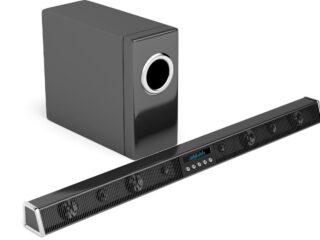
If you’re an OTT video content provider focused on delivering a top-notch user experience, you’re likely always looking for ways to enhance it and boost user retention. Here’s an idea for you:
Viewers expect seamless video playback without interruptions. They want to enjoy their favorite shows and movies without being distracted by buffering or latency issues. As a content provider, you can ensure the highest video quality possible by considering factors like the user’s device and network conditions. This is where an OTT transcoder comes into play. Let’s explore how it works.
What is Transcoding?
Before we dive into transcoding, let’s start with the basics. You begin by creating a video using a camera, resulting in a RAW file. This file is typically too large to be delivered over the Internet, so it must undergo several steps of preparation for transmission.
The first step is encoding. An OTT encoder compresses the video file, reducing its size for storage on a server. It also divides the video into smaller segments, known as chunks, which streamline the content delivery process.

Once encoding is complete, transcoding takes place. Transcoding makes the video suitable for playback on various end-user devices by creating multiple copies in different sizes and bitrates. This process helps adjust video quality according to the user’s specific conditions, ensuring smooth and adaptive bitrate streaming (ABR).
Understanding Adaptive Bitrate Streaming (ABR)
Adaptive bitrate streaming is a sophisticated technology that guarantees smooth playback, regardless of the user’s device or network conditions. By creating multiple versions of the video in various sizes and bitrates, ABR allows the video quality to adjust dynamically during playback, minimizing buffering.
For instance, if a user’s internet connection becomes unstable, the video player will switch to a lower-quality stream. When the connection is strong, the video quality will automatically improve. This dynamic adjustment ensures continuous playback, even under fluctuating network conditions.
ABR not only enhances the viewer’s experience by optimizing the video based on available bandwidth, but it also enables streaming platforms to cater to a broader audience. More satisfied viewers are likely to stay on your platform longer, increasing retention.
Why is Video Transcoding Important?
Video transcoding is crucial for several reasons:
- Buffer-free Streaming: By creating multiple versions of a video in various bitrates and sizes, transcoding supports adaptive bitrate streaming, allowing the video quality to adjust to available bandwidth during playback.
- Reduced Storage Requirements: Compression reduces storage needs, which can also lower battery consumption on devices.
- Device Compatibility: Different devices have unique requirements for video playback, and transcoding ensures compatibility across all of them.
- Lower CDN Costs: Smaller-sized video files result in reduced content delivery network (CDN) costs.
In essence, transcoding is vital for adaptive bitrate streaming, which helps deliver the best possible experience to a large and diverse audience. As new devices with varying technical requirements continue to emerge, transcoding remains essential for overcoming challenges in video delivery.
Conclusion
Delivering high-quality content can be challenging for video streaming platforms due to the wide variety of devices and network conditions used by viewers. To ensure the best user experience, you need to adopt innovative solutions. Transcoding plays a key role by creating multiple versions of the same video in different sizes and bitrates, meeting the diverse technical requirements of your audience.











